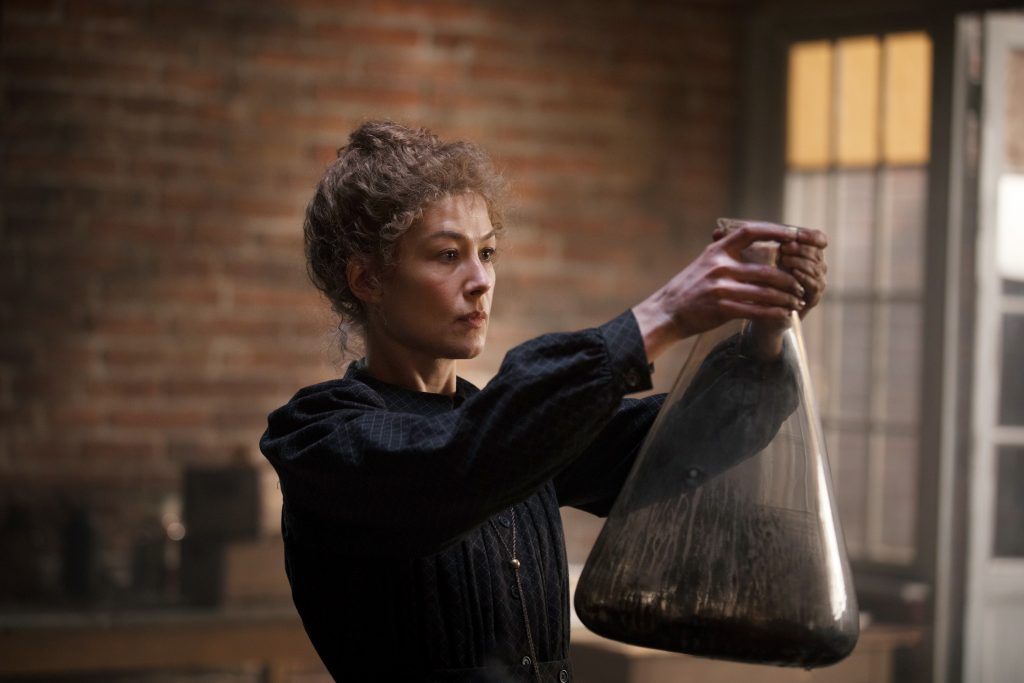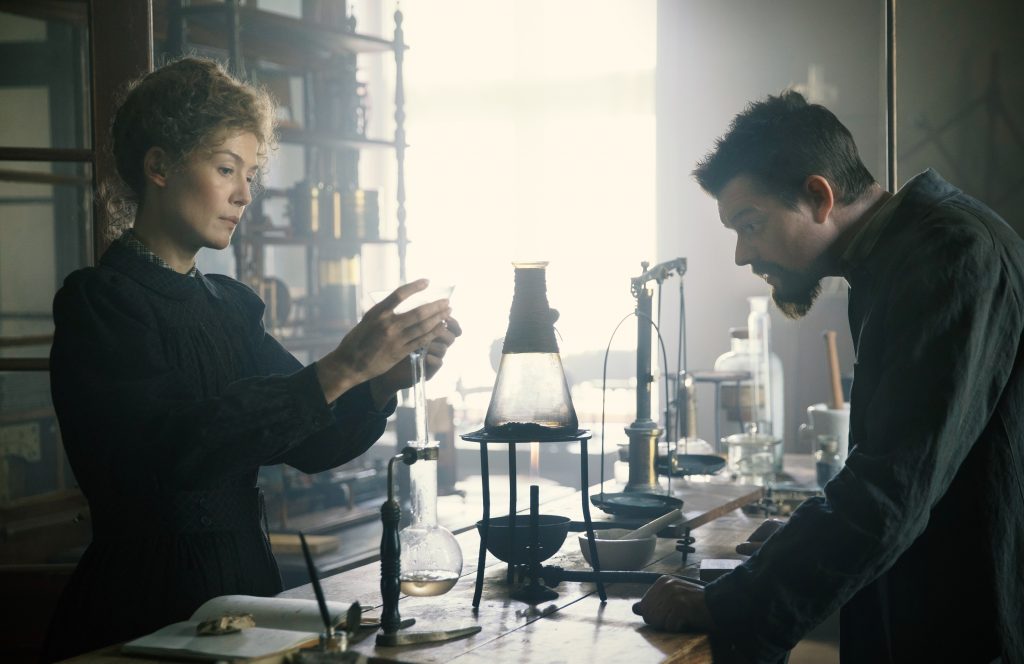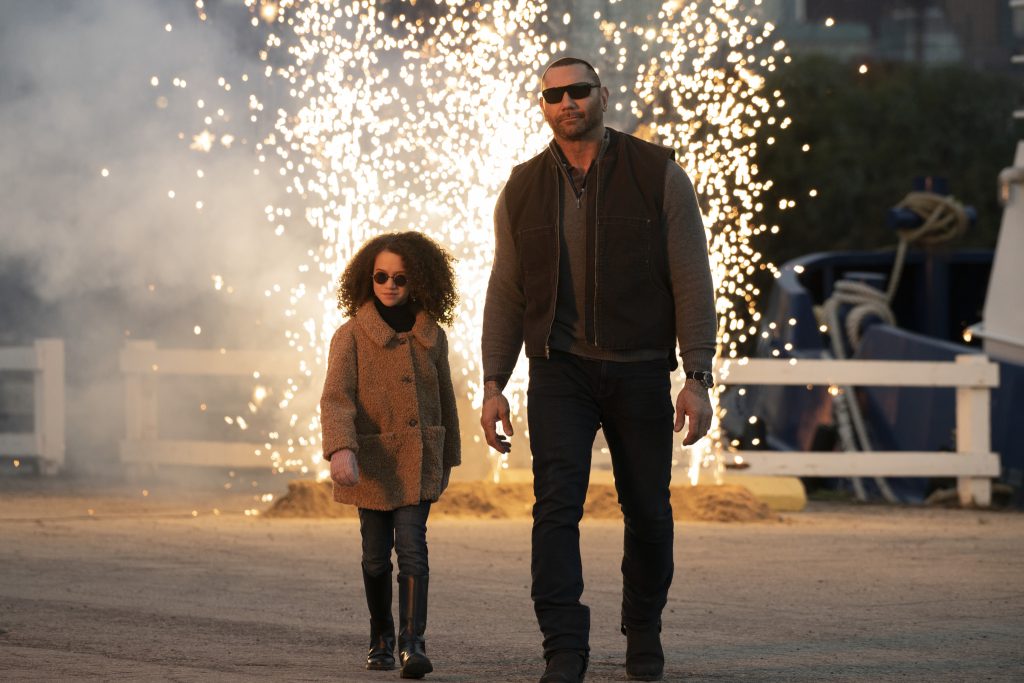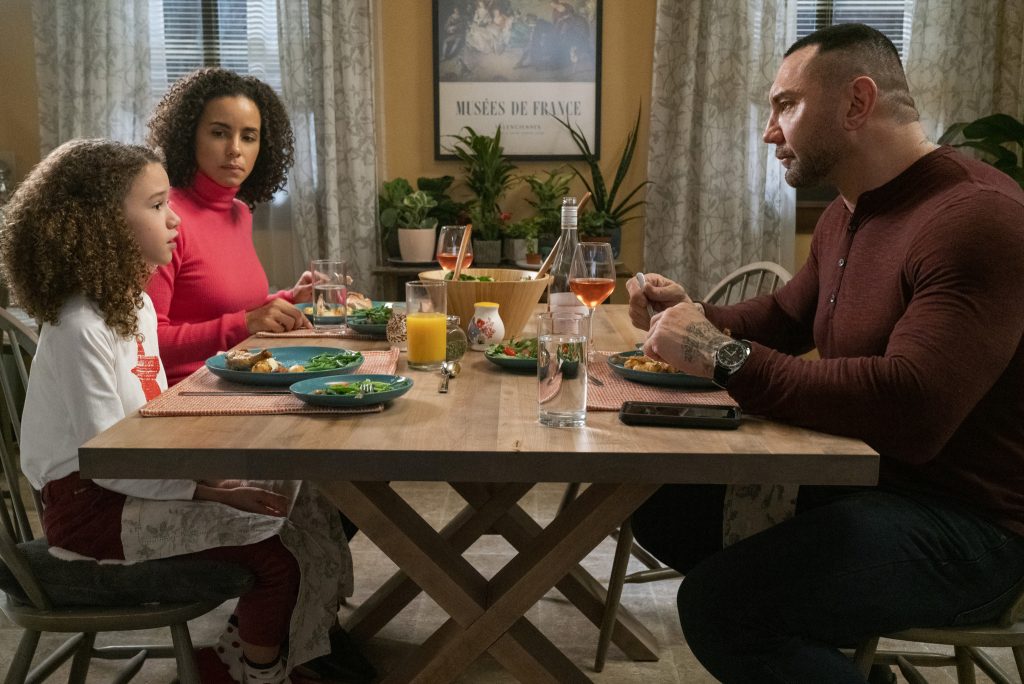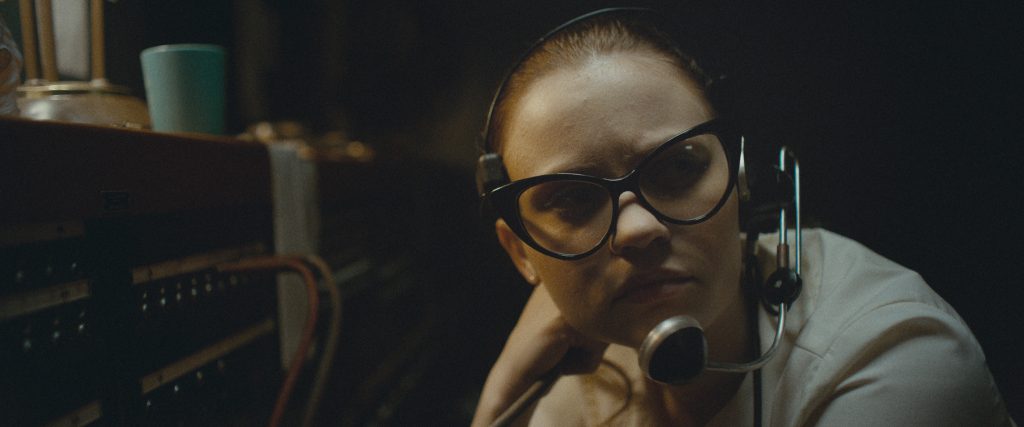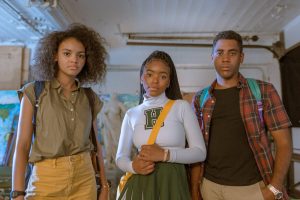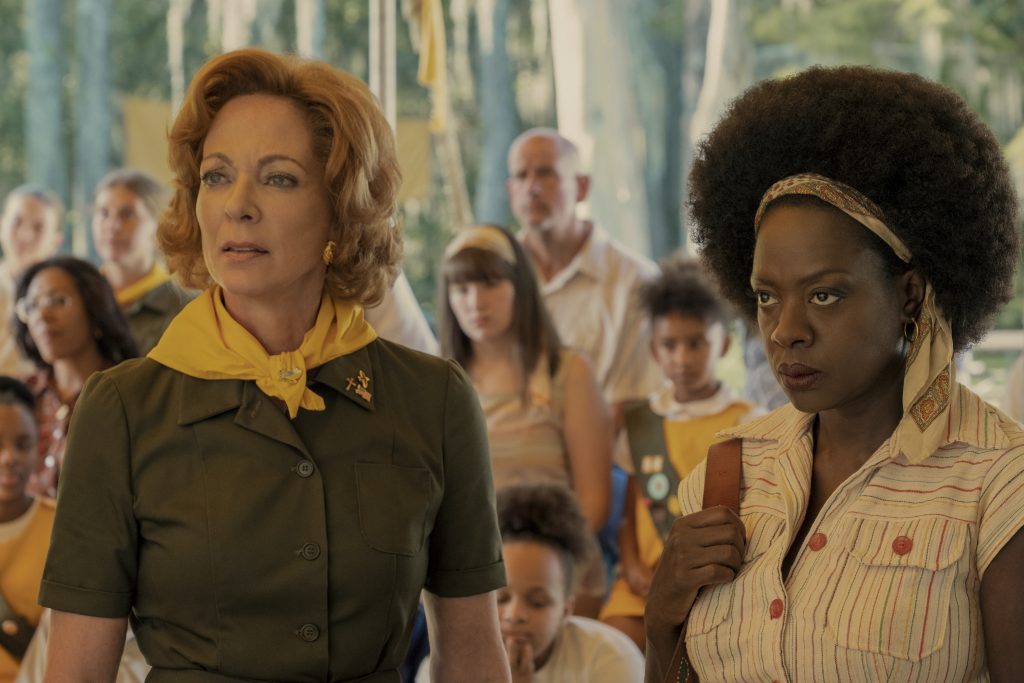September 2, 2020
by Carla Hay
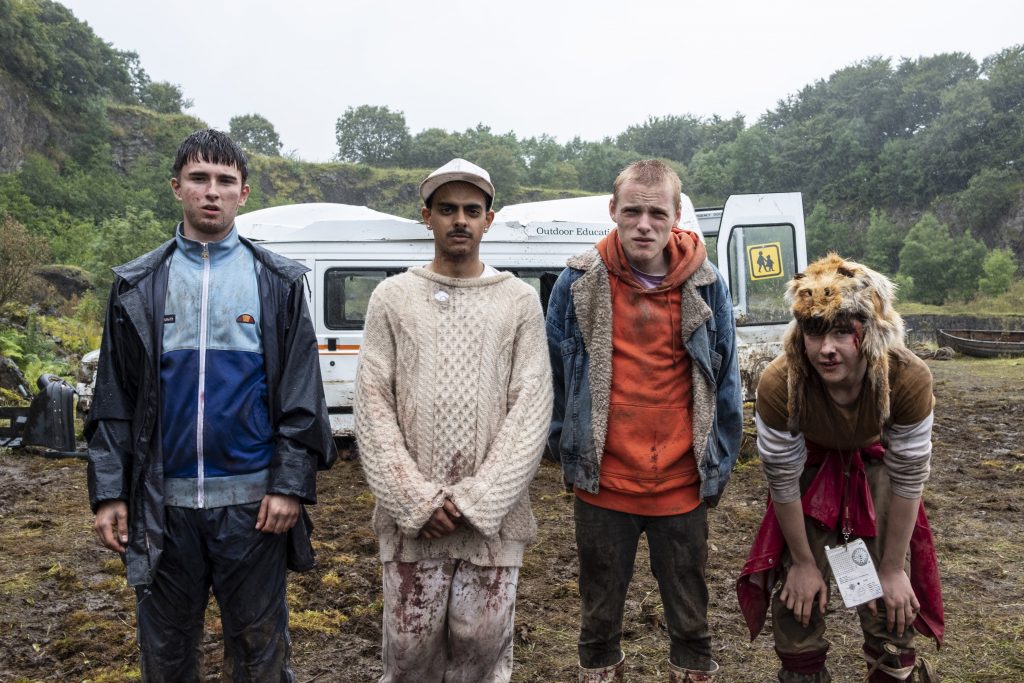
Directed by Ninian Doff
Culture Representation: Taking place in the Scottish Highlands, the comedy “Get Duked!” features a nearly all-white cast of characters (with one person of Indian descent) representing the working-class, middle-class and upper-class.
Culture Clash: Four teenage boys are sent on a wilderness-styled camping trip, where they are hunted by middle-aged aristocrats who think young people are pests that need to be eliminated.
Culture Audience: “Get Duked!” will appeal primarily to people who like wacky and slapstick-heavy comedies that have underling social commentary.

The generation gap between underage teenagers and adults has been fodder for a lot of movies and TV shows. But the absurdist comedy “Get Duked!” makes some biting social commentary about how mass shootings, terrorism and alarming predictions about the environment have created a feeling among many teenagers that the adults of the world have screwed up everyone’s futures, while adults think that teenagers are spoiled, lazy and selfish. This generational animosity is the basis for most of what happens in “Get Duked!,” which cloaks its social messages in a lot of unrealistic, slapstick humor that might seem goofy on the surface. But by the end of the film, it’s clear that it’s a satire of a very real malaise in society.
Written and directed by Ninian Doff (who makes his feature-film debut with this movie), “Get Duked!” was formerly titled “Boyz in the Wood,” in a cheeky nod to writer/director John Singleton’s 1991 South Central Los Angeles drama “Boyz n the Hood.” In the production notes for “Get Duked!,” Doff said that the movie title was changed from “Boyz in the Wood” because of “the passing of director John Singleton and the awareness of the Black Lives Matter movement, using the title ‘Boyz in the Wood’ didn’t feel respectful to John’s legacy or the Black community, especially as ‘Boyz [n] the Hood’ was such a meaningful Black cultural moment in cinema. ‘Get Duked!’ was always our working title, and we felt it was better to return to that.”
The four British teenage boys (who are about 15 or 16 years old) at the center of “Get Duked!” don’t come from a gang-ridden environment, but they’ve been sent to the remote Scottish Highlands by authority figures to try out for the Duke of Edinburgh Award, a real-life prize that has been spoofed in this movie. Getting the award consists of successfully completing a wilderness camping trip without much supervision, modern comforts or safety precautions.
Three of the four teenagers on this trip are delinquent schoolmates who’ve been sent unwillingly by their school headmaster. Dean Gibson (played by Rian Gordon) is a working-class, cynical guy who’s the delinquent group’s unofficial leader and who believes that going to college is a waste of time. Duncan McDonald (played by Lewis Gribben) is the one who’s the least “book smart,” the most unpredictable and the one most likely to come up with off-the-wall ideas. DJ Beatroot (played by Viraj Juneja) is a wannabe rapper originally from London who keeps pretending that he comes from a “ghetto” background to make it seem like he has “street cred,” but he really grew up in a comfortably upper-class family and his real name is William Debeauvois.
What kinds of trouble have these three boys gotten into that’s prompted them to go on this disciplinary trip? The usual teen delinquency problems: skipping school, vandalism, doing drugs. Duncan, who’s the “wild card” wacko of the group, also blew up a toilet in a bathroom at their school. He brags about it in the beginning of the trip, before they find out that their “toughness” will definitely be tested.
Joining this tight-knit trio of friends at the beginning of the trip is someone who’s around their same age but who’s almost the opposite of these three rebels: Ian Harris (played by Samuel Bottomley) is a straight-laced, homeschooled kid who was volunteered for the trip by his mother “so he can make friends and thrive,” according to Mr. Carlyle (played by Jonathan Aris), the adult who’s been tasked with giving orders and supervising the teenagers on this trip. Mr. Carlyle’s supervision is minimal though, since his only job is to drive them to the place where the teens begin their hiking, meet them at a couple of destination points, decide if any of them is worthy of getting the Duke of Edinburgh Award, and then drive them home.
The four teens are given instructions to hike through the woods, meet at a campsite, (where they are supposed to sleep overnight), and then complete the rest of the trip through the woods until they reach the coastal site that’s the end of their destination. They aren’t given anything except a large foldout map, which they have a difficult time reading because it’s a paper map, not a map they can look at on their phones. And it’s not as if they can really use their phones anyway, since phone reception is almost non-existent where they are in the Scottish Highlands.
Before Mr. Carlyle leaves the boys to fend for themselves, he warns them that their journey could be fraught with danger. He doesn’t go into details, but Dean, Duncan and DJ Beatroot aren’t too worried, since they don’t take the trip seriously at all. By contrast, worrywart Ian, who comes from a very sheltered environment, is paranoid about things that could go wrong. He also insists that they do things by the rules, because he’s serious about winning the award.
At first, nothing out of the ordinary happens as they begin hiking, except that they encounter a low electrical fence. They persuade Duncan to be the one to test the fence’s wiring, and he predictably gets electrocuted. Dean has brought some hashish on the trip, but Ian objects to the boys doing illegal drugs.
That doesn’t stop the other boys from giving Ian some of the hash to eat, without telling him it’s hash until after Ian ingested it. Ian is very upset by being tricked into taking hash, and the other boys mock Ian’s horrified reaction. Dean tells Ian that this trip is well-known as a way for stoners to get high in a remote area: “The Duke of Edinburgh Award is all about getting shit-faced.”
Because Dean is the de facto leader, his opinion means a lot to DJ Beatroot, who asks Dean what he thinks of DJ Beatroot as a stage name. Dean admits that the name will make people think of the vegetable beetroot and that it doesn’t sound like a tough street name at all. DJ Beatroot is crushed by this criticism. When he’s alone, DJ Beatroot pulls up his shirt and looks in dismay at the DJ Beatroot name that he had newly tattooed on his torso.
During their wayward hiking, the four teens encounter an elderly farmer (played by James Cosmo), who is driving a tractor. DJ Beatroot takes the opportunity to promote his music by giving the farmer a postcard-sized DJ Beatroot promotional card. DJ Beatroot has also brought along a CD of his music, which comes in handy later on in the story.
Unbeknownst to the four boys, someone has been stalking them with a gun. And it isn’t long before they find out that this won’t be an ordinary hiking trip. The gunman shows himself when he fires his rifle at the boys, whose main defense “weapons” are eating utensils. And it’s obvious that he’s shooting to kill, as the chase begins throughout the rest of the movie.
Who is this psycho on the loose? His name is The Duke (played by Eddie Izzard), and he’s later joined by his wife The Duchess (played by Georgie Glen), who’s literally his partner in crime. They are aristocrats who are hunting teenagers for no other reason than they think the teenagers who are on this trip must be the type of delinquents who deserve to die. The Duke keeps repeating this mantra: “We’ve got to cull the weakest animals for the good of the herd.”
Not all of the action in “Get Duked!” takes place in the woods where the boys are being hunted. There’s also a subplot showing two bungling local police officers—Sergeant Morag (played by Katie Dickie) and PC Hamish (played by Kevin Guthrie)—who are so country bumpkin-ish and bored that they jump at the chance to investigate anything that might be a crime. They usually make wrong assumptions and blow things out of proportion, based on broad stereotypes. Morag’s judgment is also clouded because she’s desperate to get promoted.
For example, when Morag and Hamish find the four teens’ hash and DJ Beatroot’s CD in the woods, Morag jumps to this conclusion: “Drugs and hip-hop. We’re dealing with a London gang.” And then Hamish calls in a racist report to the department by saying: “We’re on the lookout for 15 to 20 young black males in hoodie tops.” It’s the movie’s obvious satire of real-life racial profiling done by police.
There’s also some other racial commentary in the film. When the boys are being hunted, Dean says to blonde, blue-eyed Duncan that Duncan is in the least danger because “You’re the whitest guy here” and that Duncan is “practically albino.” And when the bumbling cops at the police station get a call about delinquent Duncan being in their area and get a mug-shot-styled photo of him, the cops have his name misspelled as if it’s an Arabic name (Doonkhan Mach D’Naald) and they label him as a “suspected terrorist.”
As The Duke and Duchess are hunting down their prey, he comments to her about the teenagers, who aren’t giving up easily and are fighting back: “We are old. That’s why they’re not scared of us.” The Duchess replies: “When did that happen? We used to be invincible.” Later on, Dean gives a semi-epic rant about how older generations have ruined things for future generations because they’re short-sighted and greedy.
Izzard plays The Duke as fairly calm and calculating, but it’s clear that the actor is having fun with the role in a way that doesn’t become too camp. Glen’s portrayal of The Duchess is more unhinged. Even with their contrasting styles, it’s hilarious to see these two villains’ reactions in some of the scenes where they don’t have the upper hand like they thought they would. All of the movie’s actors are well-cast in their roles and have a great sense of comedic timing. And it will come as no surprise that Bottomley’s Ian character is the one who goes through the biggest metamorphosis.
Many of the characters in “Get Duked!” (usually the adults) are presented as clueless buffoons who are out of touch with the real world and rely on racist stereotypes to automatically judge people. The obvious metaphor of The Duke and Duchess’ deadly hunt is that older generations are callously killing off young people—maybe not by going around and shooting them on camping trips but by destroying the environment that will make the world a much more unstable and dangerous place to live environmentally for future generations.
It’s a message that’s undoubtedly sympathetic to the teenagers, but at times it rings a little hollow because someone like Dean (who’s the most vocal about his disdain for older authority figures) isn’t exactly doing anything to make his life better either. His self-defeatist attitude that he’s doomed to a life of bleak despair can’t all be blamed on older generations, because he should take responsibility for how he lives his life. That’s not to say that Dean should become a political activist, but he actually does have a lot of the “lazy” and self-centered characteristics that The Duke and The Duchess say they abhor in young people.
However sympathetic that “Get Duked!” might be toward the plight of young people, the movie, under Doff’s mostly well-paced direction, doesn’t lose its sense of humor as it takes viewers on a madcap ride in the teens’ fight for survival. The adults aren’t the only ones to make bad decisions, which is another point made by the movie. In all the finger pointing about which generation is worse, the fact is that no generation is immune from people who embody the worst of humanity. It might be conveyed with over-the-top and raunchy comedy, but the overall message of “Get Duked!” is that the strongest who survive in life are the ones who are not complacent.
Prime Video premiered “Get Duked!” on August 28, 2020.

